Wildlife
The spring flowers were everywhere. Cowslips were in abundance on Wroxall Down, Under Copse, South Down and St Martin’s Down. We have some of the finest displays of cowslips on the Island. Great care is taken to manage their habitat. Last year rabbits wrecked the crop and many were eaten before they had a chance to flower.
The grass in the fields on the new farm at Rew shot ahead but it is too rich for the best interests of the Highland cattle. It passes straight through them. Learning our way, we plan to take a crop of hay where possible next year and thus deprive the land of some of its nutrients. Intensively farmed in the past, the nutrients encouraged docks and nettles. Our contractor, Des Harvey, had his time cut out boom spraying the fields to kill off docks, thistles and nettles. It will take two years to tidy up the farm. At Wroxall, Barry was busy with his weed wiper. Too many nearby farms do not control their injurious weeds until it is too late. Ragwort and thistles multiple by the million and in the dry summers it is only too easy for their light seeds to be swept away by the wind and drift over and land on the countryside miles away. Ours is the first, and I believe the only, weed wiper on the Island. It was delivered last year and so we still need to learn how best to use it. Adding to an already busy schedule, Barry and his gang continued with the fencing and gating at Rew Farm and laying new water pipes. It is essential that the water tanks are spread across the fields so that they encourage cattle to range widely and freely rather than poach at solitary tanks in a corner. At Rew Cottage, Barry and his brother, Wayne, have cleared down the conifer trees which hid the view. They have opened up the garden and re-fenced it. It now has a view to die for as one looks across the fields where the Highlanders graze, to the ancient woodland Rew Copse as a backdrop. The war on magpies continues and 8 were successfully trapped during the month. The number of song birds at Wroxall is well below what it should be and blame can be clearly attributed to the masses of magpies, crows, rooks and jackdaws to be found on the farm. Adam Wright is continuing with his entomology survey on Mottistone Down and Coombe Plantation. In his progress report of May, he wrote:
Highland CattleSpring is an active time for cattle management. The stock is transferred from their winter to summer grazing quarters. Every animal has to be checked over, wormed and feet looked at. The cows are divided up into three groups of about 20 each for their respective bulls. The best matings for each heifer or cow have to be assessed. Calves are born between the end of January and the beginning of May. Each one has to be tagged with its ministry reference number shortly after birth. A hazardous task. At the end of April the bulls are put in with their herds where they will remain until 1st August. In May, the yearling and two year old heifers and yearling steers are checked over before they are loaded up and taken to their summer conservation grazing areas. The fences all have to be walked and checked. In all, it is a three month period when there is no let up for the cattle managers, added to which, this year, they had to start on adapting Rew Farm for our purposes. 15 yearling heifers and 2 nannies were sent to Mottistone Down where they have settled in well and are doing a fine conservation grazing job. So as not to over load Mottistone, 5 heifers were sent to graze at Coombe Bank where they will remain for the summer.
Those at Idlecombe and Rowborough did not have such a good start because the vegetation was slow to start growing. They had to be fed more hay and supplements. The last calf was born on the 8th May, making 52 to be born this spring. With so many fine and well bred young heifers coming along, and also because of the difficulty in selling our steers for store, we reduced our breeding stock. In doing so we improved its overall quality. All the old cattle have been retired from breeding this year. They will spend the summer grazing our spare capacity grassland and later will be sold off for conservation grazing or meat. Within the next three years we will take out all our non-full stud book stock. A feature of the month was the purchase of Lynn of Balure and her daughter Lynn 2nd of West Merkland at Alan Cooper’s dispersal sale in Perth. The two are of Mary Maclean’s female line which has done us so well over recent years. Lynn herself was shown at Oban at the same time when we purchased Lucy of Balure, the champion heifer. I liked Lynn plenty then but she went for 3,000 guineas which I felt was a full price. Three yeas and two calves later, I bought her at the lower price of 1,000 guineas. On arrival they had to go into quarantine for a week. This was extended because the vets took tests on them and time was needed for the results. BirdlifeMike and Daphne Watson continue to make their base count at Rew. Weather conditions have not been ideal and for their visit on the 15th May it was overcast with an intermittent light rain. In three and a half hours they recorded 120 birds of 29 different species, including, for the first time, red legged partridge, collared dove, whitethroat and chaffinch. A total of 37 species have been counted so far. Most of this visit’s activity was in the fields between the two roads. This is a charming area, open to more sunlight and where there are some good hedges. The Watsons agree that the count so far is low. This does not worry us. Their task is to make a survey before we start our conservation works. Once we obtain our HLS and ELS, we will begin our hedge management, including coppicing and gapping poor hedges. We will manage Rew Copse, letting in more light which will benefit a whole range of birds. We do not expect to see early improvement in the pastures which have been intensely managed, but on the northern part of the farm, where the grassland is more established and the hedges older, our grazing regime and field management should lead to an early habitat improvement for birds. The Watsons report on almost everything they see. They noted a green winged orchid in solitary state, a superb specimen of wayfaring tree in flower along the southern edge of Rew Copse, two magnificent field maples in flower giving a reddish cast to the appearance of the whole tree, and their first sighting this year of a silver-Y moth. The detail of Graham Sparshott’s survey at Chillingwood and Rowlands Wood will wait until his work has been completed. Highlights of his visits in April and May included 4 singing chaffinch, 3 singing blackcap, a great spotted woodpecker’s nest with young, and 1 roding woodcock. Our forester, Keith Lea, has recently recorded in Wroxall Copse a number of bird species which are breeding within the wood. They include: green woodpecker (seen excavating a nest hole in a veteran ash), great spotted woodpecker, blackbird, whitethroat, great tit which liked veteran tree holes, stock dove, bullfinch, chaffinch, blackcap, spotted flycatcher, dunnock, song thrush, willow warbler, blue tit (which again liked veteran tree holes), carrion crow, robin and treecreeper. Conservation
All the new conservation works carried out during the month were in woodland. Keith completed his recording and marking of veteran trees in Wroxall Copse which totaled 306. His report is expected in June. The survey emphasised how important the Copse is.
Keith reported on Wayne Isaacson’s work at Rowborough which had been delayed through of illness. The wood has a large number of veteran trees with notable specimens of ash and field maple. They have been freed of competition from neighbouring trees intruding into their canopies. Keith compared the veterans with Wroxall. Although Rowborough has fewer, the pressure they are under is far greater with competition from neighbouring and under planted trees. The distribution of trees also varies with some trees at Rowborough being isolated and exposed. Wroxall Copse has a more stable eco-system and has received far less interference by man. Three of the five planned hazel coupes at Wroxall Copse have now been coppiced. Each year we cut areas of about one hectare and spring is a good time to see how they are progressing. The photographs below show the progress after a year and also illustrate how in the second coup the ground flora has benefited.
In one area of the new coupes there is a small sharply defined coffin shaped area devoid of growth. It was the same last year. Does anybody know the reasons?
AccessWhen John Paton planned the wild flower walk to be held at Wroxall on 7th May, he obviously did not know of the delays which were going to be caused by the cold and wet
spring. On 21st May the National Trust’s Robin Lang and our John Paton co-hosted a walk on Mottistone Down. The whole walk was in cloud. It was raining and there was a gale. It was also cold. Seven people, however, braved the unfriendly elements and insisted on carrying on. The IOW cloud made the views non existent, but Robin was excellent and he explained the whole mosaic of flowers and vegetation as they went along and how it changed with the different altitudes and geology. The cattle could not be seen in the mist but Mark was on hand and, recognising his call, they descended at speed upon the group. One of the walkers was unhappy that the Highland cattle should be out in such dreadful weather. They were, in fact, in conditions they were most suited to. They dislike and do badly under shelter. The Highland cow is the only breed of cow which is permitted to live out all the year round in Sweden. Unconnected with Wight Conservation, is the annual charity Walk the Wight with over 5,000 participants passing through our property in Brighstone Forest, Brighstone Down and on Mottistone Down. It was a great pleasure to see them. They were tidy and well behaved. Our particular thanks go to the organisers for posting stewards to see that the gates were kept closed. FoxhuntingOn a walk through Wroxall and Rew, I saw a total of 7 foxes in one afternoon. These included 4 cubs playing just outside an earth at Rew which they share with badger. It is a good time of year to view foxes. One evening at Idlecombe I espied the head of what I took to be a fine looking dog fox. When he moved, however, his flanks were completely bare from mange. I do not know whether he had been dumped there by the RSPCA or if the density of the fox population is now too high for their good health. When foxhunting was legal, the foxes would have been chased around and dispersed. Foxhunting was more about fox control than fox killing, and the countryside has lost a valuable way of management. At our mainland base, a dead cub was picked by a gate. It had been shot by .22 bullet which had passed clean through its stomach. There is no fox shooting on this estate and so it must have traveled some distance from where hit before it finally died. If any animal activists read this notes, I do hope that they are now beginning to realise the great cruelties to foxes they have inflicted in the countryside by supporting the hunting ban. May they be forgiven. They are certainly no friends of wildlife.
Previous Months: September October November December January February March April | |||||||||||||||||||||||||||||||||||
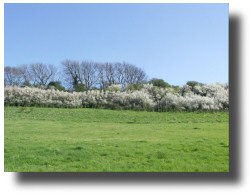 Spring outpoured into the woods, fields, hedges and wildflowers. After the wet, cold beginning, it made one thrilled to be alive. Why do people go anywhere else in the world during May?
Spring outpoured into the woods, fields, hedges and wildflowers. After the wet, cold beginning, it made one thrilled to be alive. Why do people go anywhere else in the world during May?

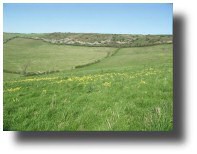
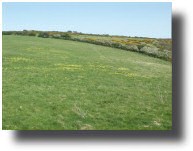

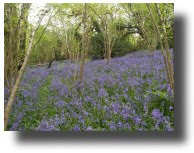
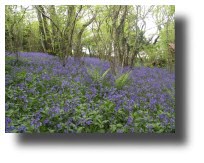
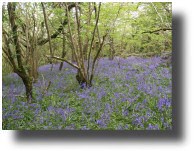
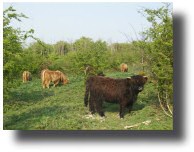


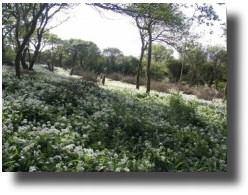
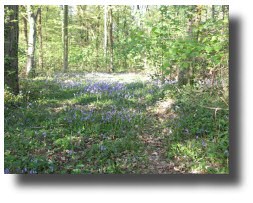 No additional work was carried out in Rowlands Wood,but on walking through it Keith was pleased with its progress. The rides cut back in the winter, benefiting from the removal of scrub and bramble, had a good number of primroses in particular. In another ride he noticed that primroses and narrow leaved lungwort were being shaded out and next autumn plans to cut back 2m on either side. The rides were in need of mowing but unfortunately Bob Wright, who lives in the wood and deals with this routine task, is very ill. He has our best wishes.
No additional work was carried out in Rowlands Wood,but on walking through it Keith was pleased with its progress. The rides cut back in the winter, benefiting from the removal of scrub and bramble, had a good number of primroses in particular. In another ride he noticed that primroses and narrow leaved lungwort were being shaded out and next autumn plans to cut back 2m on either side. The rides were in need of mowing but unfortunately Bob Wright, who lives in the wood and deals with this routine task, is very ill. He has our best wishes.
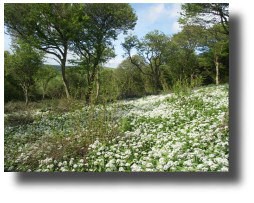
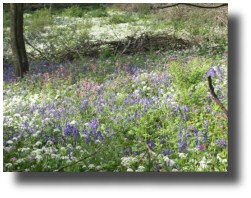
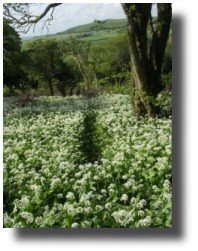
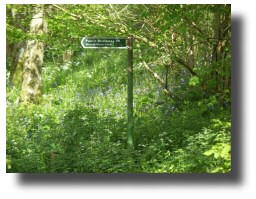 Consequently there was less than normal to show our guests. There were 24 participants, and although the bluebells were yet to flower en masse, they enjoyed the carpets of cowslips on Wroxall Down. On emerging from Wroxall Copse they were treated to the sight of four fox cubs playing in the field below which entertained them for about 20 minutes.
Consequently there was less than normal to show our guests. There were 24 participants, and although the bluebells were yet to flower en masse, they enjoyed the carpets of cowslips on Wroxall Down. On emerging from Wroxall Copse they were treated to the sight of four fox cubs playing in the field below which entertained them for about 20 minutes.